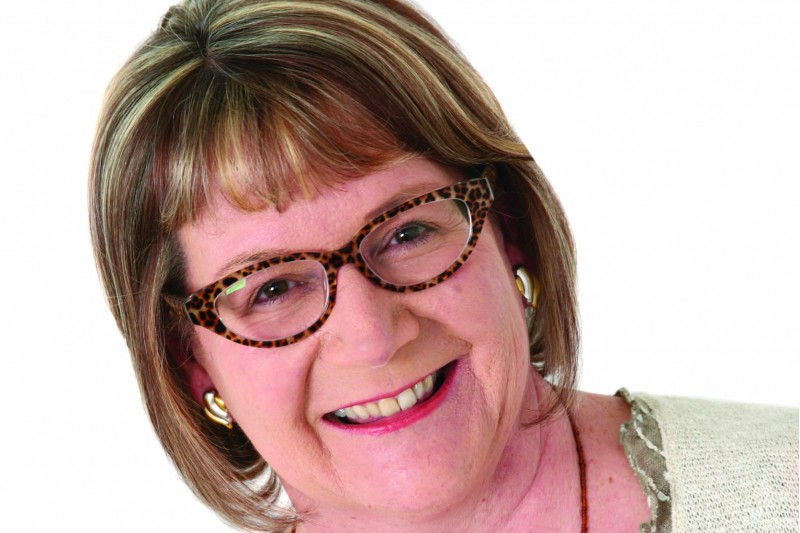With more tech-savvy students than ever before, higher tuition fees and the upcoming Teaching Excellence Framework (TEF), expectations on the university learning experience have never been higher.
BU is offering more and more opportunities for staff to develop their skills; and with a new virtual learning environment (VLE) on the horizon too, Head of the Centre for Excellence in Learning (CEL) Professor Gail Thomas rewinds a few years to remind us of the important revelations that triggered these exciting developments.
- What inspired the new VLE and emphasis on technology enhanced learning (TEL)?
In 2013 we successfully bid for some consultancy support from a consortium including the HEA, JISC, ALT, NUS and the Leadership Foundation, focusing on changing the landscape of learning through TEL. Over that academic year, Geli (Dr Gelareh Roushan) and I worked with the consultants to understand where we were at with TEL at BU. We looked at our strengths and our weaknesses, and how we could move to a more consistent and innovative use of the VLE which students would value.We learnt that students didn’t necessarily use myBU in the way that we thought. Those we spoke to didn’t use it throughout the year to routinely access information, announcements and resources, but they did use it for revision.
Similarly we found out things from academic staff that we didn’t expect. We had assumed that many colleagues just weren’t keen on using technology, but we found that many wanted to innovate but had found that the technology had not delivered on a regular basis. We expected to find a group of those who were keen and those who were reticent, but instead we found a large ‘let down’ group who had lost confidence in the tools.
- So how did BU respond to this new information?
BU listened to this feedback and has since made a significant investment in this area, including refreshed technology, an upcoming new VLE (through the Vision4Learning Project) and in staff development time. Since 2014 for example, there’s been a significant IT and AV refresh. Now there’s new kit in virtually every teaching room, which is consistent and much more reliable. - Talk us through V4L…
V4L started in 2014 with three themes. The first is refreshing the virtual learning environment (VLE). We’d been using Blackboard for many years and – as well as a legal procurement requirement – it was time to look at new platforms to make sure we were offering students and staff the best tools for learning. We had lively involvement from staff and students taking part in usability testing and we’re in the final throes of deciding which platform to use. It’s a £6 million investment and critical to delivering a high quality and flexible learning experience. Every student and staff member will benefit. We’ll be implementing a fairly intensive programme next year too, preparing staff for how they’ll be using the new VLE, which will be really useful. - And the other strands of V4L?
The second strand is how we use BU’s valued Learning Technologists (LTs). We’ve got disparity across the university at the moment and they’re not always in the best place in the organisation to be as effective as they can. BU has also committed to two new posts – Academic Learning Designers – who will be an additional resource to work with both academic teams and LTs to embed the best blend of learning opportunities at curriculum development and review points.And the last – and most challenging – strand is cultural change. We want our academic staff to feel confident and excited using blended learning tools, have a system that is easy to navigate and have a curriculum that is as inclusive as possible in terms of where learners are based and their preferred learning styles.
CEL has run a range of initiatives to support academics in this journey. My favourite examples are the Students as Trainers sessions we ran, where students taught academics new digital skills and the competition ‘How do you use yours’ assessing the effectiveness of the TEL toolkit. These were really successful and made a significant difference to some individuals. The Try Something Different resources are encouraging staff to think differently about how they use our new teaching spaces as well as the traditional ones.
- What would you say to staff who want to try something different, but are a bit unsure?
We need to accept that change is constant and we’ll never keep a competitive advantage if we’re not constantly evolving. Students will forgive you if you try something new and it doesn’t quite work, but they might lose interest completely if you don’t!
There are many ways you can get involved. Dip into the TEL toolkit, use the CEL Blog or come along to one of the i:Innovate workshops, which inspire people to think – not just about technology – but the whole blend of learning.
Look out for the new CPD units too – coming soon. They follow on from the PGCert on learning and teaching approaches and give staff the dedicated time and tools to explore new approaches. These are perfect for someone who wants to give something new a try but is unsure about the next steps.
Gail gave this interview with BU’s Internal Communications Team in December 2016.



